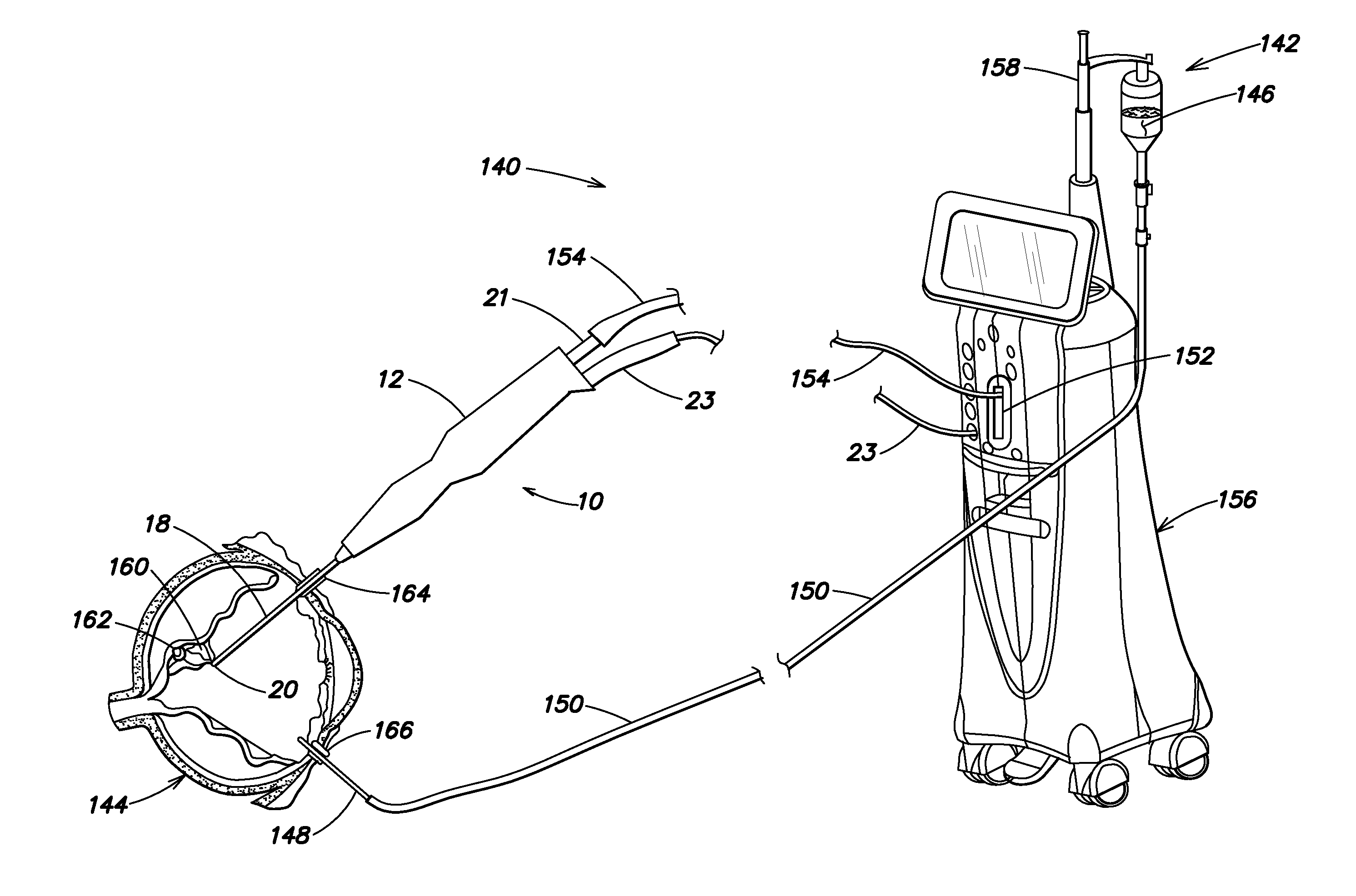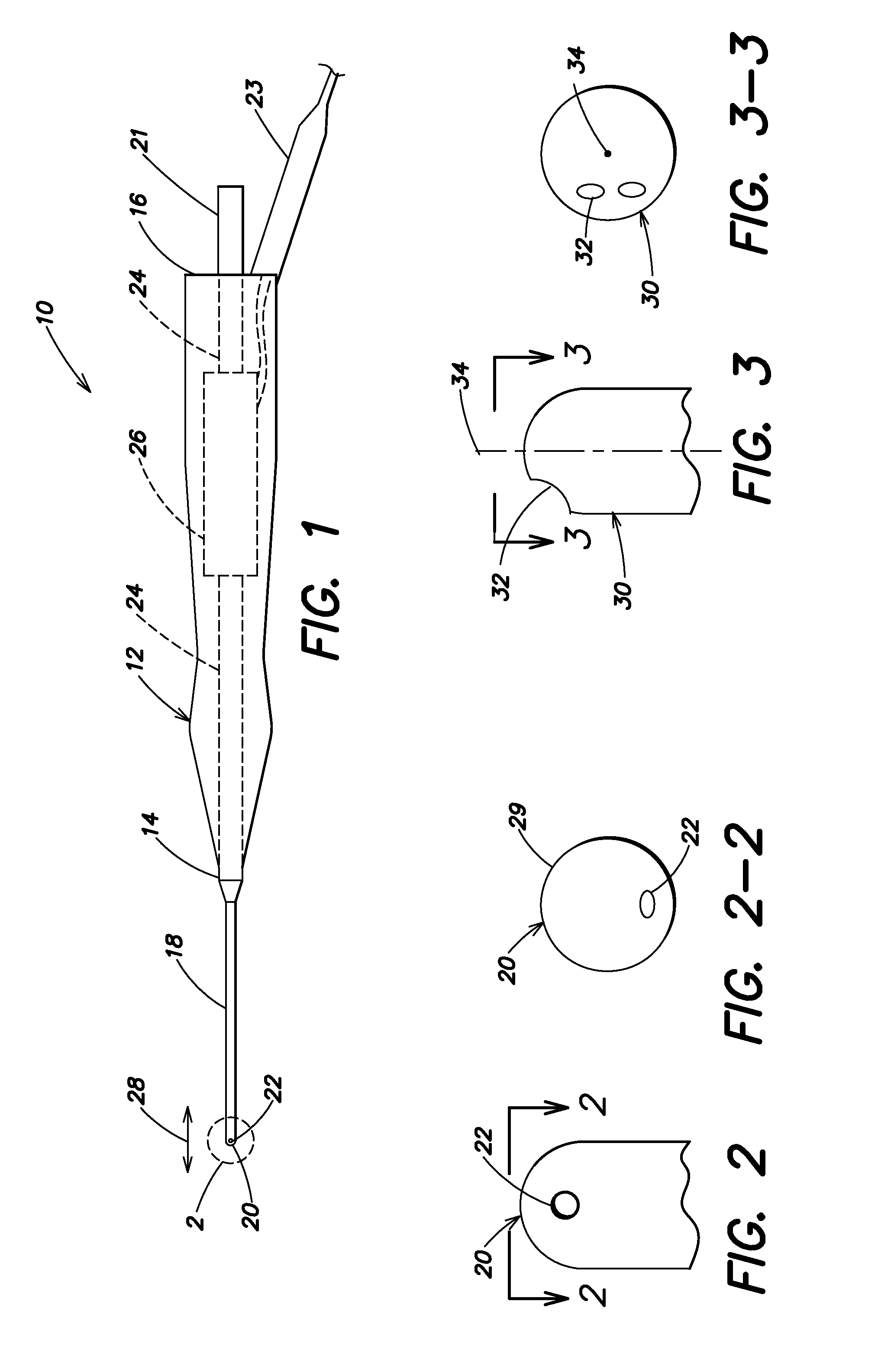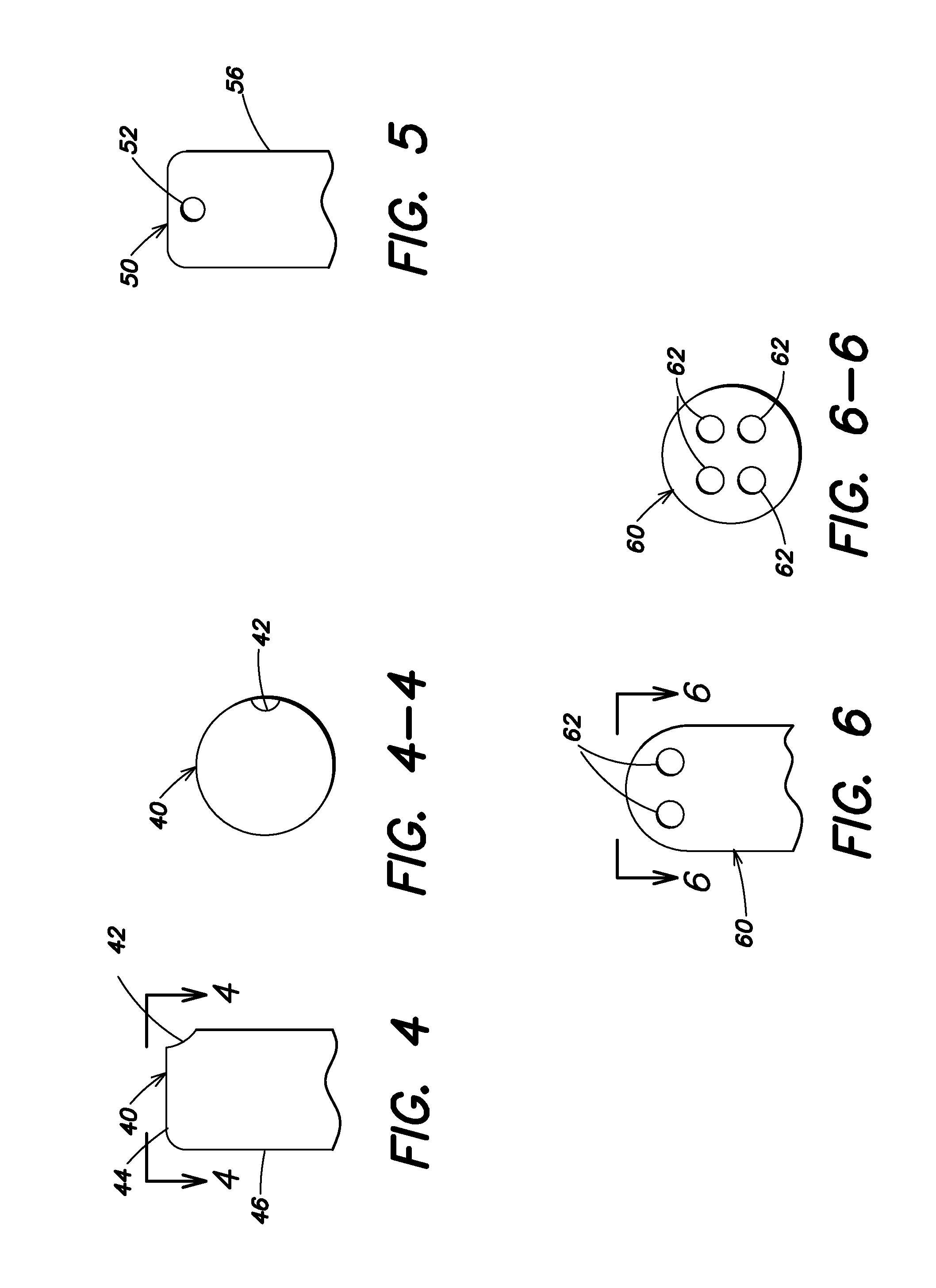Vibrating Surgical Device for Removal of Vitreous and Other Tissue
a surgical device and vitreous technology, applied in the field of vitreous surgical device for the removal of vitreous and other tissue, can solve the problems of reducing the flow rate below the surgically desirable level, affecting other structures, and affecting the operation. effect of operation
- Summary
- Abstract
- Description
- Claims
- Application Information
AI Technical Summary
Benefits of technology
Problems solved by technology
Method used
Image
Examples
Embodiment Construction
[0065]Example embodiments will now be described more fully with reference to the drawings.
[0066]FIG. 1 is an elevation of an ophthalmic surgical device 10 according to one example embodiment. Device 10 includes a housing 12 having a distal end 14 and a proximal end 16. A cannula 18 is attached to the housing distal end 14. The cannula 18 has a distal tip 20 with at least one port 22 in communication with a lumen (not shown in FIG. 1) extending through the cannula 18 and in communication with an aspiration path 24 in the housing 12. A vibration source 26 is held within the housing 12 for vibrating the distal tip 20 of the cannula 18 for assisting in vitreous and other tissue removal from a patient's eye. An aspiration source (not shown in FIG. 1) is connected to aspiration path 24, via tube connector 21, for applying a negative pressure to the lumen and the at least one port 22 for removing fluids and the vitreous and other tissue from the eye. The vibration source 26 and the aspirat...
PUM
 Login to View More
Login to View More Abstract
Description
Claims
Application Information
 Login to View More
Login to View More - R&D
- Intellectual Property
- Life Sciences
- Materials
- Tech Scout
- Unparalleled Data Quality
- Higher Quality Content
- 60% Fewer Hallucinations
Browse by: Latest US Patents, China's latest patents, Technical Efficacy Thesaurus, Application Domain, Technology Topic, Popular Technical Reports.
© 2025 PatSnap. All rights reserved.Legal|Privacy policy|Modern Slavery Act Transparency Statement|Sitemap|About US| Contact US: help@patsnap.com



